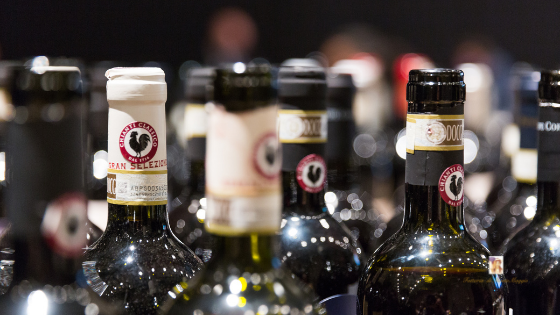
Classico and Chianti are not the same wine.
👉 Chianti Classico is produced only in the historic Chianti area between Florence and Siena, following stricter DOCG rules and marked by the famous Black Rooster (Gallo Nero).
👉 Chianti DOCG, often called “regular Chianti,” comes from a much larger area of Tuscany with more flexible production rules, allowing greater variation in style and quality.
📍 Origins of Chianti Classico
-
The Chianti Classico zone was officially delimited in 1716 by Cosimo III de’ Medici, Grand Duke of Tuscany.
-
It includes towns like Greve, Radda, Castellina, Gaiole, and parts of San Casciano, Barberino, and Castelnuovo Berardenga.
-
Only wines from this historic zone can display the Black Rooster seal.
By contrast, the broader Chianti DOCG designation was created in 1932 and covers a much wider portion of Tuscany, far beyond the original Chianti hills.
🍇 Grapes and Production Rules
-
Chianti Classico DOCG
-
Minimum 80% Sangiovese, up to 100%.
-
Up to 20% other approved red varieties (Canaiolo, Colorino, Cabernet Sauvignon, Merlot).
-
No white grapes allowed.
-
-
Chianti DOCG
-
Minimum 70% Sangiovese.
-
May include up to 10% white grapes (Trebbiano Toscano, Malvasia).
-
Less restrictive rules → greater variability in style.
-
🕰️ Aging Requirements
-
Chianti Classico
-
Annata (Vintage): at least 12 months.
-
Riserva: at least 24 months + 3 months in bottle.
-
Gran Selezione: at least 30 months, only from the winery’s best estate-grown grapes.
-
-
Chianti DOCG
-
Vintage wines can be released after as little as 6 months.
-
Fewer hierarchical categories.
-
🌍 Terroir and Wine Style
-
Chianti Classico vineyards sit on hills up to 600 m above sea level, with rocky soils (galestro and alberese) and a continental climate.
→ Wines are fresher, more structured, and have better aging potential. -
Chianti DOCG vineyards can include lower altitudes and different soils, producing wines that are lighter, fruitier, and more approachable.
✅ Label Recognition
-
Chianti Classico: Always carries the Black Rooster seal + “Chianti Classico DOCG.”
-
Chianti DOCG: Simply labeled “Chianti DOCG,” sometimes with a subzone (e.g., Chianti Colli Senesi, Chianti Rufina).
🍽️ Food Pairings
-
Chianti Classico → Florentine steak, game meats, hearty Tuscan dishes.
-
Chianti DOCG → Pasta with tomato sauce, cured meats, everyday Italian cuisine.
📖 Glossary
-
DOCG: Denominazione di Origine Controllata e Garantita — Italy’s highest quality designation.
-
Sangiovese: Tuscany’s flagship red grape, known for bright acidity, firm tannins, and floral aromas.
-
Terroir: The unique combination of soil, climate, and tradition shaping a wine’s identity.
❓ FAQ
1. Is Chianti Classico always better than Chianti?
Not always. There are excellent Chianti DOCG wines. But in general, Chianti Classico has stricter rules, more consistent quality, and greater aging potential.
2. Do all Chianti Classico bottles have the Black Rooster?
Yes. It is the official symbol of the Chianti Classico Consorzio.
3. Can I visit Chianti Classico wineries?
Absolutely. Wineries like Fattoria di Montemaggio offer vineyard tours, tastings, and immersive experiences in the Tuscan countryside.
4. Why is Chianti Classico usually more expensive?
Lower yields, stricter production rules, longer aging, and premium terroir drive higher average prices.






Leave a Reply